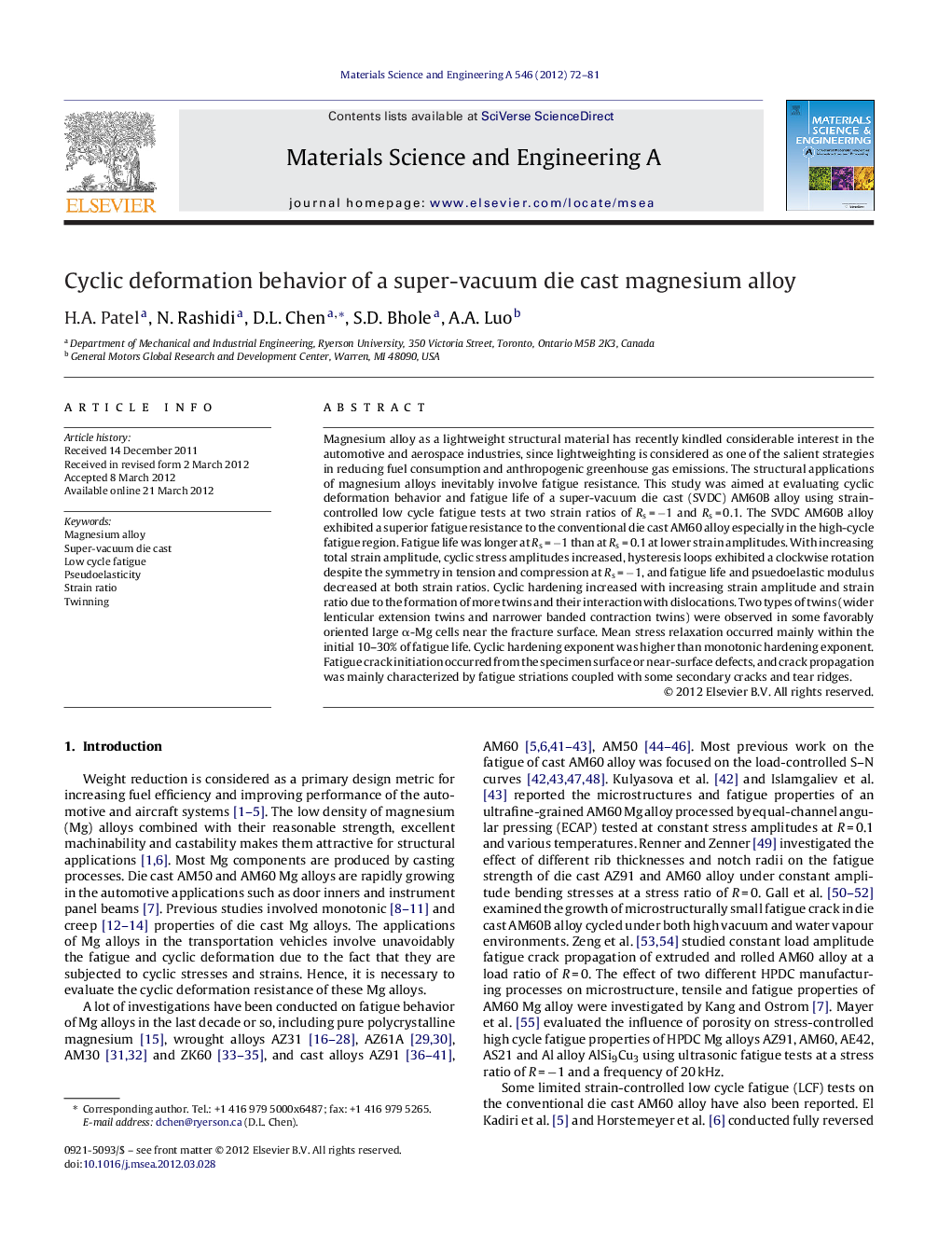| Article ID | Journal | Published Year | Pages | File Type |
|---|---|---|---|---|
| 1577273 | Materials Science and Engineering: A | 2012 | 10 Pages |
Magnesium alloy as a lightweight structural material has recently kindled considerable interest in the automotive and aerospace industries, since lightweighting is considered as one of the salient strategies in reducing fuel consumption and anthropogenic greenhouse gas emissions. The structural applications of magnesium alloys inevitably involve fatigue resistance. This study was aimed at evaluating cyclic deformation behavior and fatigue life of a super-vacuum die cast (SVDC) AM60B alloy using strain-controlled low cycle fatigue tests at two strain ratios of Rs = −1 and Rs = 0.1. The SVDC AM60B alloy exhibited a superior fatigue resistance to the conventional die cast AM60 alloy especially in the high-cycle fatigue region. Fatigue life was longer at Rs = −1 than at Rs = 0.1 at lower strain amplitudes. With increasing total strain amplitude, cyclic stress amplitudes increased, hysteresis loops exhibited a clockwise rotation despite the symmetry in tension and compression at Rs = −1, and fatigue life and psuedoelastic modulus decreased at both strain ratios. Cyclic hardening increased with increasing strain amplitude and strain ratio due to the formation of more twins and their interaction with dislocations. Two types of twins (wider lenticular extension twins and narrower banded contraction twins) were observed in some favorably oriented large α-Mg cells near the fracture surface. Mean stress relaxation occurred mainly within the initial 10–30% of fatigue life. Cyclic hardening exponent was higher than monotonic hardening exponent. Fatigue crack initiation occurred from the specimen surface or near-surface defects, and crack propagation was mainly characterized by fatigue striations coupled with some secondary cracks and tear ridges.
► Super-vacuum die cast AM60B magnesium alloy exhibits superior fatigue resistance. ► Cyclic hardening increases with increasing strain amplitude and strain ratio. ► Hysteresis loops are nearly symmetrical at R = −1 despite the non-linear variation. ► Loading and unloading elastic moduli decrease with increasing strain amplitude. ► Both extension and contraction twins are observed near the fracture surface.
